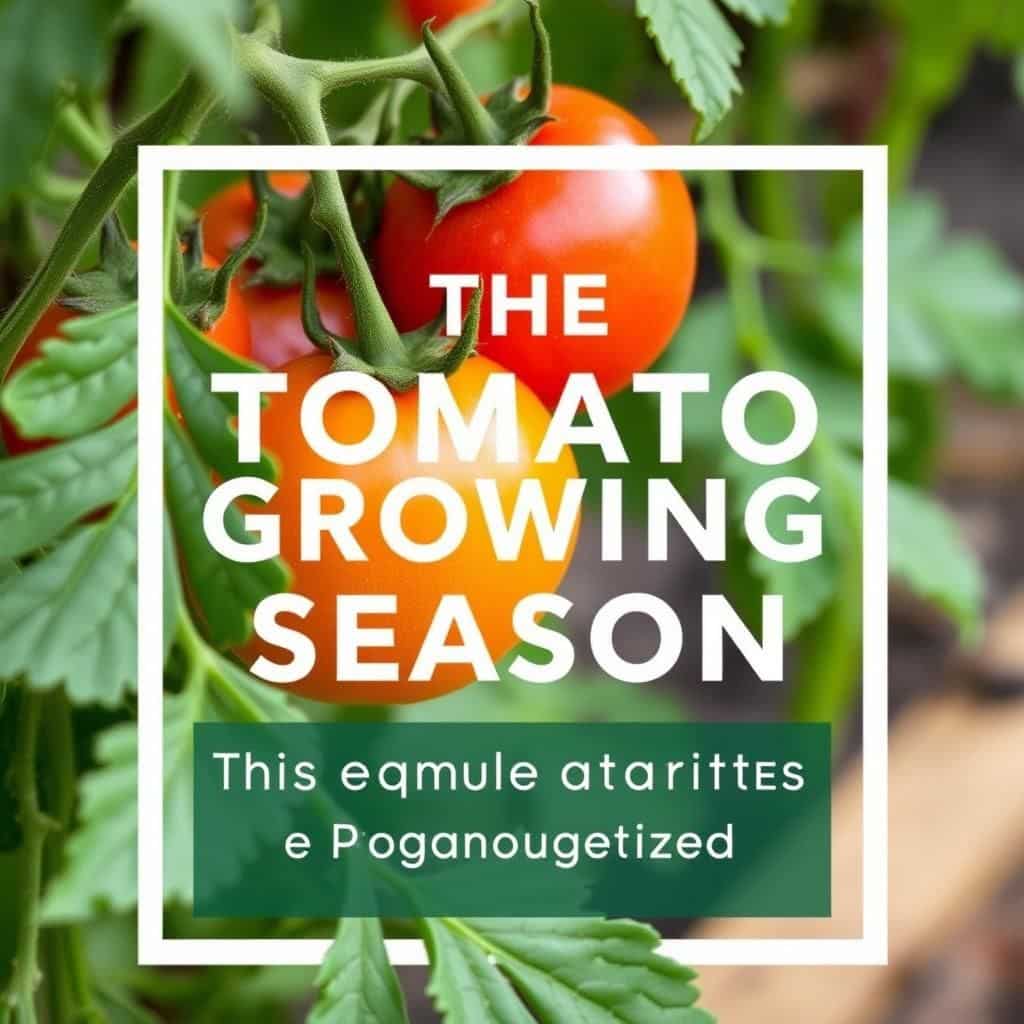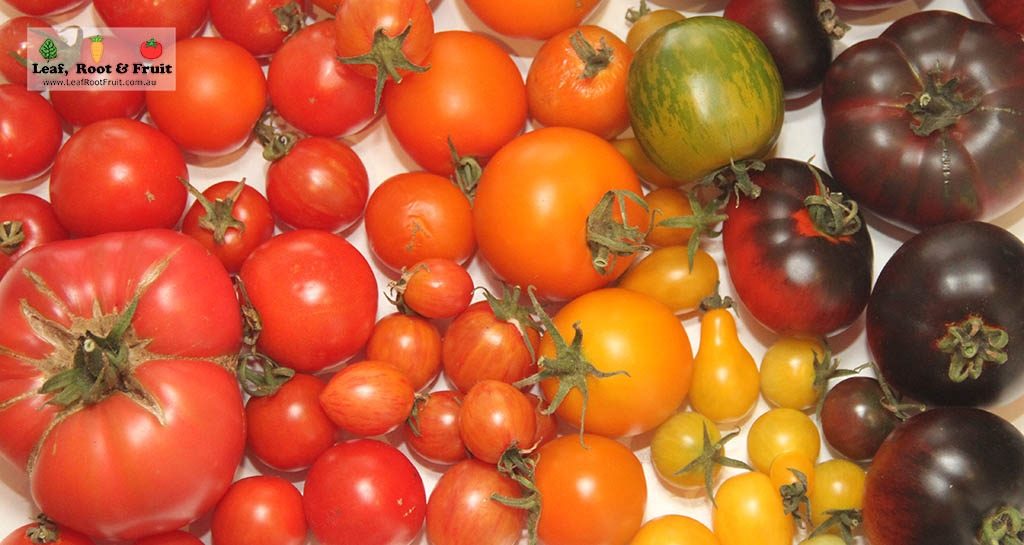The Ultimate Guide to the Tomato Growing Season Melbourne: Tips and Timing for a Bountiful Harvest

The tomato growing season in Melbourne presents a unique opportunity for home gardeners to cultivate this beloved fruit. With its temperate climate and diverse soil conditions, Melbourne offers ideal conditions for a bountiful harvest. Understanding the key factors such as planting times, varieties suited for the region, and essential care practices can significantly enhance your gardening success. This ultimate guide aims to provide you with practical tips and insights on when to plant tomatoes, how to care for them during their growth stages, and ways to maximize your yield. Get ready to enjoy a delicious and rewarding tomato season!
Understanding the Tomato Growing Season in Melbourne
The tomato growing season in Melbourne typically begins in spring, around mid-September, and extends through to early summer, ending in March. During this period, the climate is ideal for tomatoes as the temperatures gradually rise, providing the warmth and sunlight they need to thrive. Gardeners should consider starting seeds indoors in August to get a head start, while outdoor planting should take place after the last frost date, which is usually late October. Maintaining consistent soil moisture and providing adequate fertilization can significantly enhance yield, ensuring a bountiful harvest by the time summer rolls around.
Best Tomato Varieties for Melbourne
In Melbourne, it's essential to select tomato varieties that are well-suited to the local climate. Popular options include Roma, Cherry, and Beefsteak tomatoes. These varieties thrive in Melbourne’s warm summer temperatures and are resistant to common diseases. Many gardeners also opt for heirloom varieties, which can offer unique flavors and colors, making the gardening experience more rewarding. Understanding your climate and choosing suitable varieties will significantly impact your success in growing tomatoes.
Optimal Planting Times
The optimal planting time for tomatoes in Melbourne is crucial for successful growth. As mentioned, sow seeds indoors in August and transplant seedlings outdoors after the last frost, which usually occurs in late October. It is essential to monitor soil temperature, ideally aiming for at least 20°C (68°F) for the best germination rate. Planting too early or too late can lead to poor yields and increased vulnerability to diseases.
Soil Preparation and Fertilization
Preparing the soil adequately is vital for healthy tomato plants. Tomatoes thrive in well-draining, nutrient-rich soil with a pH of 6.0 to 6.8. Prior to planting, enrich the soil with well-rotted compost or manure to improve fertility. Additionally, applying a balanced fertilizer during the growing season can promote strong root development and fruit production. Regularly testing soil fertility can help you adjust your fertilization strategy for optimum results.
Pest and Disease Management
Managing pests and diseases is crucial for a successful tomato crop. Common pests in Melbourne include aphids, whiteflies, and snails, which can damage the plants. Employing integrated pest management strategies, such as introducing beneficial insects and using organic pesticides, can help control these issues. Additionally, diseases like blight and powdery mildew can be mitigated by ensuring good air circulation and avoiding overhead watering. Keeping an eye on plant health ensures early detection and treatment.
Watering Techniques for Tomatoes
Effective watering is essential to prevent stress on tomato plants. During the growing season, tomatoes need consistent moisture, typically requiring about 1-2 inches of water per week. Using drip irrigation or soaker hoses can help deliver water directly to the root zone, minimizing evaporation. It's crucial to avoid overhead watering as it can lead to disease. Monitoring soil moisture levels and watering at the base of the plants will ensure healthy growth and fruit development.
| Stage | Recommended Actions | Time Frame |
|---|---|---|
| Seed Sowing | Start indoors | August |
| Transplanting | Outdoors after frost | Late October |
| Growth Period | Water & Fertilize | November - March |
| Harvesting | Pick when ripe | February - March |
What month do you plant tomatoes in Melbourne?

In Melbourne, the best time to plant tomatoes is typically from late September to early November, coinciding with the spring season. This timing allows for optimal growth conditions as the temperatures begin to rise and the risk of frost decreases. Tomatoes thrive in warm weather, so planting them after the last frost date is crucial for a successful harvest.
Ideal Growing Conditions for Tomatoes
To ensure successful tomato cultivation, it is essential to understand their ideal growing conditions.
- Temperature: Tomatoes prefer temperatures between 20°C and 30°C (68°F to 86°F) for optimal growth.
- Sunlight: They require at least 6 to 8 hours of direct sunlight per day to thrive.
- Soil: Well-drained, nutrient-rich soil is crucial; a soil pH of about 6.0 to 6.8 is preferable.
Preparing the Soil for Tomatoes
Before planting, proper soil preparation is vital to ensure healthy tomato plants.
- Testing pH: It's recommended to test the soil pH and amend it if necessary to create an ideal environment for tomatoes.
- Adding Compost: Incorporate organic matter such as compost to improve soil fertility and structure.
- Drainage: Ensure that the soil has good drainage to prevent waterlogging, which can lead to root rot.
Choosing the Right Tomato Varieties
Selecting the appropriate tomato variety is key to successful gardening in Melbourne's climate.
- Heirloom Varieties: These provide rich flavors and are often well-suited for local conditions.
- Hybrid Varieties: Consider hybrids for enhanced disease resistance and yield.
- Determinate vs. Indeterminate: Understand the difference; determinate varieties grow to a fixed height, while indeterminate continue growing and producing fruit throughout the growing season.
Watering and Maintenance Schedule
Proper watering and maintenance are essential as the tomato plants grow.
See also:
- Consistent Watering: Water deeply and consistently, especially during dry spells, avoiding overhead watering to minimize disease risk.
- Mulching: Apply mulch to retain soil moisture and regulate temperature.
- Pest Management: Regularly check for pests and diseases, implementing organic control methods as necessary.
When to Harvest Tomatoes
Understanding the right time to harvest tomatoes can make a significant difference in flavor and quality.
- Color Indicators: Look for a consistent, rich color; most varieties change to a deep red.
- Firmness: Gently squeeze the fruit; it should be firm but yield slightly to pressure.
- Squat Shape: For certain varieties, a squat shape indicates ripeness rather than full roundness.
Which month is best for growing tomatoes?

The best month for growing tomatoes highly depends on geographical location and climate conditions. In general, tomatoes thrive in warm weather, making late spring to early summer the ideal time for planting. Specifically, May is often considered the best month for starting tomato plants in many regions, as it typically features consistent temperatures that encourage healthy growth and development.
Optimal Temperature for Tomato Growth
The success of tomato cultivation largely relies on maintaining the optimal temperature ranges. Tomatoes flourish in temperatures between 70°F and 85°F (21°C to 29°C). When considering the best month for planting:
- The risk of frost has generally passed by late spring.
- Soil temperatures are warm enough to support germination.
- Daytime temperatures encourage robust plant growth and fruit development.
Soil Preparation for Tomatoes
Proper soil preparation is essential for a successful tomato crop. As the planting month approaches, it's critical to prepare the soil accordingly to promote healthy growth:
- Ensure the soil is well-draining and rich in organic matter.
- Perform a soil test to check pH levels and nutrient content.
- Add necessary amendments, like compost or fertilizers, to boost soil quality.
Choosing the Right Tomato Variety
The timing of planting can also depend on the variety of tomatoes chosen. Different tomato varieties have different growth durations and requirements:
- Determine whether you prefer determinate or indeterminate varieties.
- Consider local climate and days to maturity for each variety.
- Select varieties that are well-suited for your particular growing conditions.
Importance of Frost Dates
Understanding the last frost date in your region is critical for determining when to plant tomatoes. Planting too early can expose young plants to frost, which can be detrimental:
- Research your local average last frost date.
- Wait until after the last frost to transplant outdoor tomatoes.
- Utilize protective methods, like cloches or row covers, if there’s a risk of late frost.
Pest and Disease Management
Tomatoes are susceptible to various pests and diseases, which are more prevalent at certain times of the year. Being aware of these issues during the growing season can optimize tomato health:
- Implement preventive measures by selecting disease-resistant varieties.
- Regularly monitor plants for signs of pest infestations or diseases.
- Consider using organic pest control methods to minimize risks.
What season do tomatoes grow in Australia?

Tomatoes in Australia generally thrive during the warm months, which are primarily considered the spring and summer seasons. The typical growing season spans from September to March, with the peak production occurring in the warmer months of December and January. The specific growing conditions can vary by region, given Australia's diverse climate.
Different states may have their own unique growing seasons based on local weather patterns; hence, it's crucial for gardeners and farmers to understand their specific climate conditions.
Factors Influencing Tomato Growth in Australia
Tomato growth is influenced by various factors that can determine their success in different regions of Australia. Significant elements include:
- Temperature: Tomatoes prefer warm temperatures between 20°C to 30°C (68°F to 86°F). Lower temperatures can hinder their growth.
- Soil Type: Well-drained, loamy soil rich in organic matter promotes better growth and fruit production for tomatoes.
- Sunlight: A full-sun location, receiving at least 6-8 hours of sunlight per day, is essential for optimal photosynthesis and growth.
Regional Differences in Tomato Growing Seasons
Australia's climate varies significantly across its vast territory, leading to different growing seasons. Each region has its characteristics:
See also:
- Subtropical Regions: Areas like Queensland have longer growing seasons, allowing tomatoes to be planted later in the year.
- Tropical Regions: Northern Australia can grow tomatoes year-round due to milder temperatures.
- Temperate Regions: In places like Victoria, tomatoes are typically planted in spring for a summer harvest.
Common Tomato Varieties Grown in Australia
Several tomato varieties are favored by Australian gardeners due to their adaptation to local climate conditions. These varieties include:
- Cherry Tomatoes: Small, sweet, and perfect for snacking, they grow well in various conditions.
- Roma Tomatoes: Ideal for sauces and preserves, they are known for their dense flesh and low moisture content.
- Beefsteak Tomatoes: Renowned for their large size and flavor, they require more care but yield substantial fruits.
Essential Care for Tomato Plants
Proper care is crucial for a successful tomato harvest. Here are vital practices:
- Watering: Regular and consistent watering helps prevent issues such as blossom end rot and ensures steady growth.
- Fertilization: Incorporating a balanced fertilizer supports nutrient needs throughout the growing season.
- Pest Control: Monitoring for common pests and using organic methods can protect the health of tomato plants.
Harvesting Tomatoes in Australia
The harvesting process is essential in ensuring tomatoes reach their peak flavor and quality. Key points include:
- Timing: Tomatoes should be harvested when they are fully colored and slightly firm to the touch.
- Technique: Gently twisting the fruit or using scissors can prevent damage to the plant and remaining fruits.
- Post-Harvest Care: Tomatoes should be stored in a cool, dark place to prolong freshness after harvesting.
When to grow tomatoes in Melbourne?

To grow tomatoes in Melbourne, it's important to understand the local climate and the best timing for planting to ensure a successful harvest. Melbourne's climate is characterized by a temperate zone with four distinct seasons, and tomatoes thrive in warm conditions. The ideal planting season for tomatoes in Melbourne typically spans from mid-September to late November. This timing aligns with the warmer spring months when the chances of frost are minimal, allowing the plants to establish and produce fruit before the peak heat of summer.
Optimal Planting Time
The best time to plant tomatoes in Melbourne depends significantly on the last frost date in spring. Generally, the mid-September to November window is recommended. Early varieties may be planted closer to mid-September, while late varieties are better suited for planting in November. The timing ensures that tomatoes can enjoy the warm air and soil temperatures vital for their growth.
- Mid-September for early tomatoes.
- November for mid to late varieties.
- Monitor local frost dates to avoid damage.
Soil Preparation
Preparing the soil before planting is crucial for a successful tomato crop in Melbourne. Good soil quality promotes healthy root development and nutrient uptake. It's advisable to choose a sunny spot in the garden, as tomatoes require at least 6–8 hours of direct sunlight per day.
- Add well-rotted compost or organic matter to enrich the soil.
- Ensure proper drainage to prevent waterlogging.
- Test pH levels, aiming for a value between 6.0 and 6.8.
Choosing the Right Variety
Selecting the appropriate tomato varieties that thrive in the Melbourne climate is essential. Popular options include Roma, Cherry, and Beefsteak tomatoes. Each of these varieties has unique growth characteristics and flavors.
- Roma: Great for sauces and paste.
- Cherry: Sweet and perfect for salads.
- Beefsteak: Ideal for sandwiches due to their size.
Watering and Maintenance
Proper watering practices are vital for tomato health. In Melbourne, the spring and summer months can be quite warm, leading to increased evaporation. Consistent moisture levels are necessary to avoid blossom-end rot and promote fruit development.
- Water deeply but infrequently to encourage strong root growth.
- Use mulch to retain soil moisture and suppress weeds.
- Avoid wetting the foliage to reduce disease risks.
Pest and Disease Management
Being vigilant about pests and diseases is crucial for sustaining a healthy tomato crop. Common issues in Melbourne include aphids, whiteflies, and fungal diseases like powdery mildew. Effective management strategies can minimize these risks.
- Regularly inspect plants for any signs of infestation.
- Use organic insecticides or introduce beneficial insects such as ladybugs.
- Practice crop rotation and remove any diseased plants promptly.
Questions from Our Readers
When is the best time to plant tomatoes in Melbourne?
The best time to plant tomatoes in Melbourne is typically from mid-September to early November. This timeline allows the plants to take advantage of the warm growing conditions of spring and early summer, ensuring a better yield.
What type of tomatoes grow well in Melbourne's climate?
In Melbourne's climate, cherry tomatoes and heirloom varieties are among the best options. These types are suited to the local conditions and can thrive during the city's temperate summer months, producing delicious fruit.
How much sunlight do tomato plants need in Melbourne?
Tomato plants require at least 6 to 8 hours of direct sunlight each day to flourish in Melbourne. Adequate sunlight is crucial for promoting healthy growth and ensuring a bountiful harvest later in the season.
See also:
What are common pests and diseases affecting tomatoes in Melbourne?
Common pests affecting tomatoes in Melbourne include aphids, whiteflies, and spider mites. Additionally, diseases such as powdery mildew and blight can occur, so it is essential for growers to monitor their plants regularly and take appropriate preventative measures.
https://youtube.com/watch?v=Nk3YYv7jOeY
If you want to read more articles like The Ultimate Guide to the Tomato Growing Season Melbourne: Tips and Timing for a Bountiful Harvest, we recommend you check out our Seeds category.
Leave a Reply
Related Articles